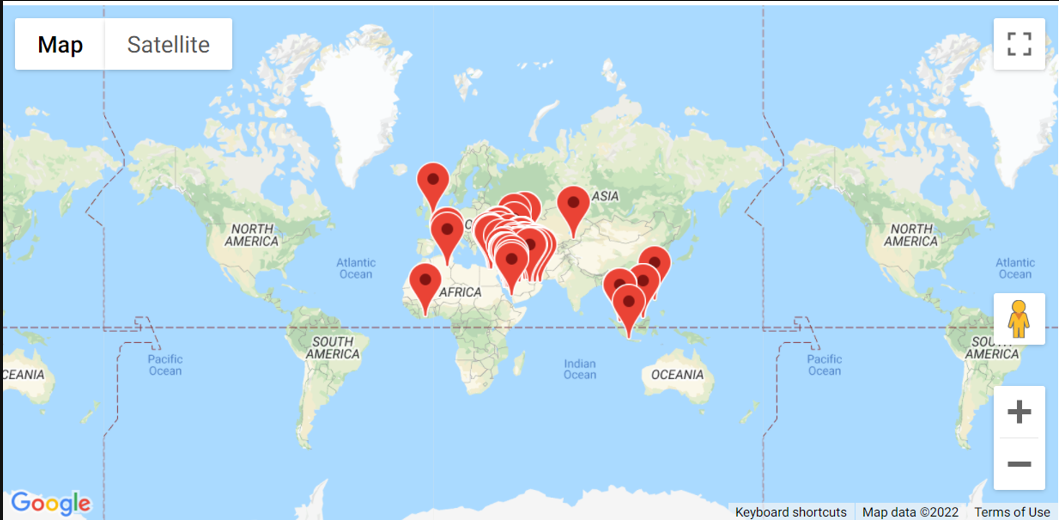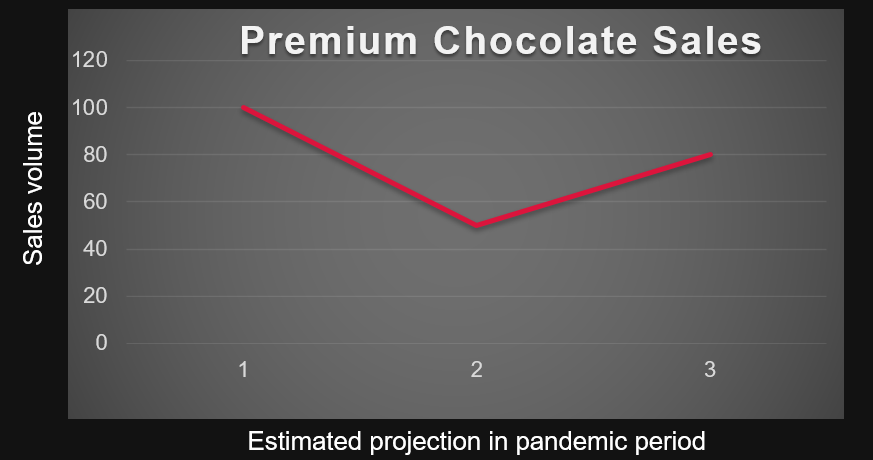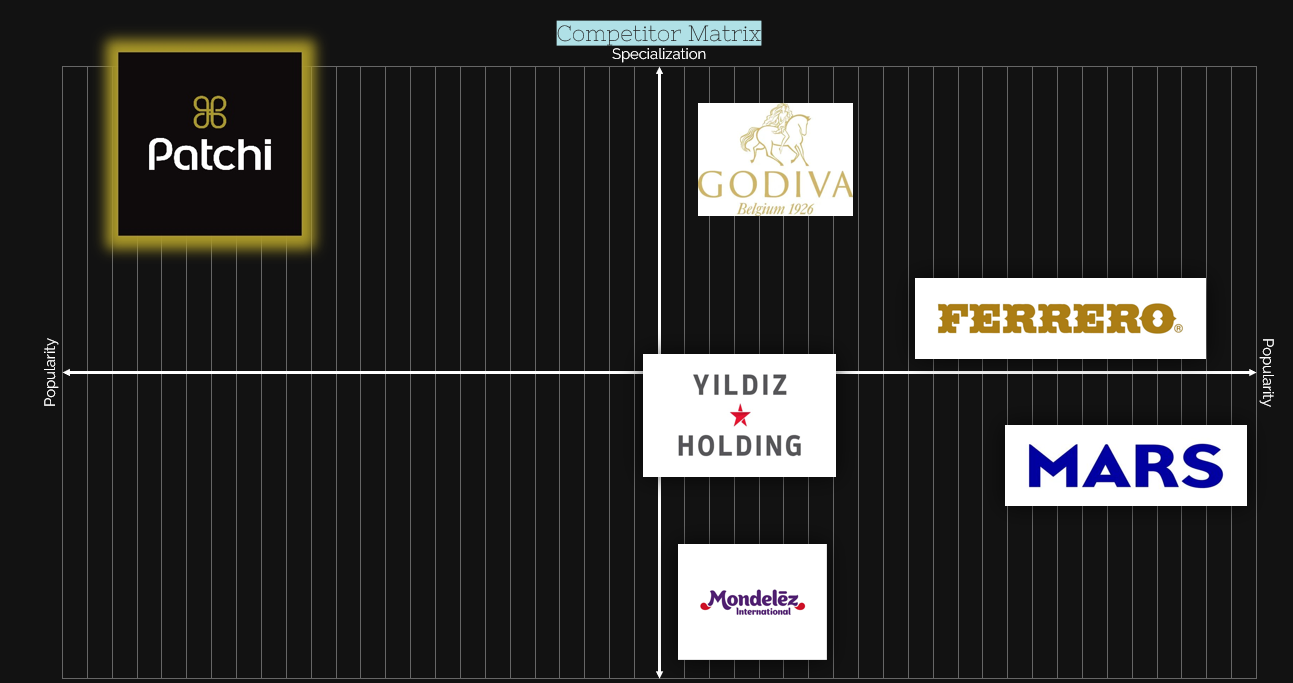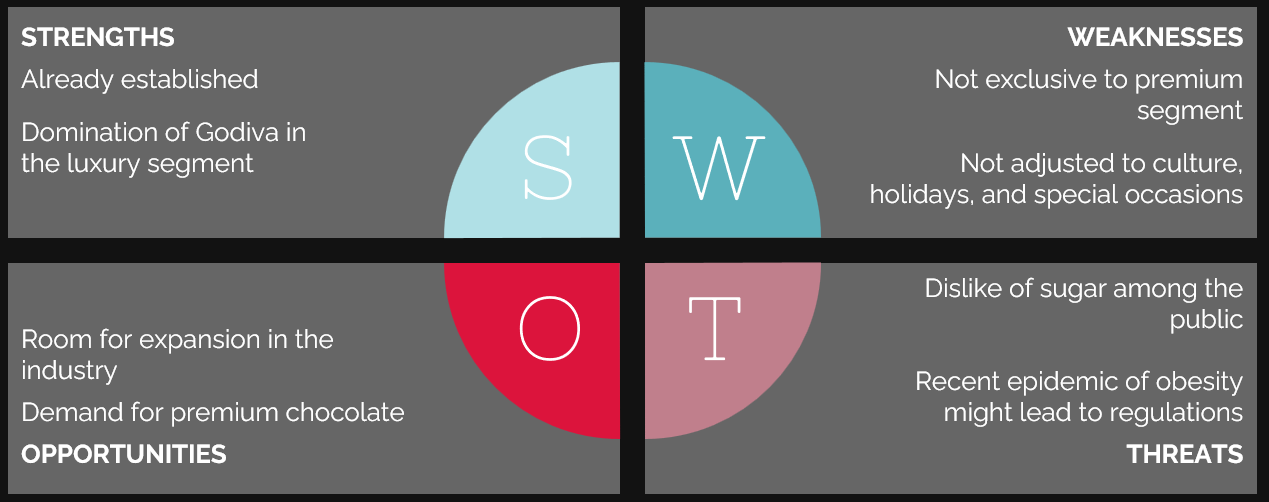Introduction
In the age of globalization, it is natural for most companies to seek an international presence. Having reached a certain level of domestic success, brands begin to consider the options of expanding their operations overseas. However, it is important to analyze the exact market options thoroughly prior to investing in the expansion. In fact, in the fallout of the COVID-19 pandemic, the trends of international business operations have shifted. When it comes to Patchi Chocolate, the prospects of an expansion to China appear interesting enough to analyze this market in more detail. Patchi is considered to be a high-end chocolate maker based in Canada. “An revelation of flavour, sight, sound, smell, and sensation that crescendos in an interactive experience and memorable emotions,” the brand describes itself (“Patchi,” n.d.). Patchi has been around for more than half a century, and over that time, the company has developed online stores, boutique shops, and Patchi cafés around the country. Patchi sells two categories of products: chocolate and gift packages comprising several chocolate varieties. The goods are manufactured entirely of cacao mass, with no added preservatives or colour (“Our creations,” n.d.). Each product is made by a chef exclusively for Patchi, giving customers a one-of-a-kind experience and flavor. Nonetheless, the business is likely to develop internationally and globally, giving Patchi the potential to expand its customer base and explore new areas.
The Product: Patchi Chocolate

The brand that is being discussed is called Patchi Chocolate. It originates from Canada, where it has already secured a relatively stable position as a well-established variety of premium chocolate (“Patchi,” n.d.). Patchi possesses over 50 years of successful history in the industry that allows it to consider new investments. Throughout this period, Patchi has worked on expanding its network of distribution, introducing boutique stores and specialized Patchi cafes, while also opening sales on the Internet. With chocolate boxes accounting for the majority of products sold, Patchi also offers exclusive gift sets for special occasions (“Our creations,” n.d.). Its online stores are available in different countries, as well, confirming a degree of international sales expertise.
The Product: Patchi Boutiques

Patchi has substantial influence in Europe, the Middle East, and Southeast Asia (“Boutiques,” n.d.). Expansion in China would allow the company to increase its global influence and make significant profits due to the increasing popularity of premium chocolate. Concerning the market footprint, it is feasible to state that China is believed to be a rapidly changing and growing market that demands new players that can offer a considerable level of competition. China is a politically stable state that was founded in 1949 and has been a one-party state ever since (The Economist Intelligence, 2021). This country is ruled by the Chinese Communist Party, and there is little political rivalry. As a result, this is a politically stable country in overall; nevertheless, Patchi should be aware of Chinese rules that protect items made in China, as the Chinese Party largely promotes local producers. One possible cause of uncertainty is China’s trade battles with the US, which have harmed the stability of international ties between this country and the rest of the world.
The Product: Demand

Patchi aims at securing a solid position in the premium segment of the overall chocolate and candy market. Naturally, this particular area of the industry has seen a more substantial impact from the COVID-19 pandemic (Mordor Intelligence, 2021). Under such circumstances, consumers had to reduce unnecessary expenses, especially when their income suffered from lockdown protocols and supply chain disruption. However, this decline of demand is temporary, and most experts agree that the sales are resuming their growth in the post-COVID era (Mordor Intelligence, 2022). Therefore, it is a good time to consider an international expansion, as the global consumer base is ready to return to a normal lifestyle.
Market Intelligence
The primary benefits of the Chinese market consist of several significant factors. First of all, it is the country with the largest population globally. With over 1.44 billion potential customers, Patchi can experience a fundamental contribution to its worldwide revenues. Consequently, China is a politically stable country that has been ruled by one party since 1949, experiencing notable economic growth (The Economist Intelligence, 2021). Moreover, China has stable trade relations with Canada, ensuring additional opportunities for development (Choi, 2021). The core of the Chinese market audience comprises educated adults with an approximately equal distribution of the population between sexes (Trading economics, n.d.). Potential consumers reside in densely populated urban areas with an adequate median income and are interested in premium chocolates. Furthermore, there is significant potential in a younger audience that is not as eager to save money and wills to spend it on leisure and culinary pleasure (Mordor Intelligence, 2022).
Risks of the Chinese Market
There are certain risks associated with the Chinese market that might potentially obstruct the expansion of Patchi. Firstly, the Chinese political regime differs vastly from the Western ideology, and it might cause misunderstandings and cultural confrontation (The Economist Intelligence, 2021). Consequently, China poses a direct threat to the global economic domination of the United States, being the second most substantial economy globally. China also has a complicated relationship with Taiwan, supported by the United States. These two factors might lead to increased political tension and deteriorate economic relations. Lastly, the Chinese government has recently loosened its control over the currency, which might lead to the fluctuation of the yuan (Reuters, 2021). Ultimately, there are certain risks associated with the Chinese market, and Patchi must consider them before expanding in Asia.
Market Features
Despite the positive improvements in China-Canada commercial ties, the ease of doing commerce in the former country remains a possible source of worry. Economies with a rating of 1 to 20 are regarded friendly and easy to conduct business in, while those with a rank of 20 or lower are less conducive to doing business (Trading Economics, 2021). China is now ranked 31st, indicating that there are significant obstacles that manufacturers and distributors may face in prospering in this economy. Nevertheless, it is worth noting that this state’s score has advanced in previous years; for instance, it was rated 46 in 2018. As a consequence, there is an upward trend in China’s ease of doing business, and potential enterprises interested in entering the market should expect improved circumstances in the coming years.
Customer Intelligence
In terms of this particular market, China currently consumes over 15% of all chocolate in the world (Mordor Intelligence, 2021). It implies that the public is interested in such products, although there are some limitations. First of all, Chinese healthcare providers advise against products that contain a lot of sugar. Therefore, healthier options are in demand in this country, which should be considered by Patchi when preparing the final market proposition. This pursuit of health and quality encourages Chinese people to try premium options, and the fallout of the pandemic has contributed to the growth of the online segment. With the overall positive projections of the market’s future growth, Patchi can combine these features in a highly beneficial manner.
Competitor Intelligence
The chocolate market in China is populated by a variety of global and local brands. Such industry giants as Mondelez, Ferrero, and Mars actively participate in the country’s operations (Mordor Intelligence, 2021). However, they target a wider audience with their broad assortment of products that span across different tiers and appeal to various demographic groups. From these considerations, Patchi does not directly compete with the mentioned brands due to Patchi’s focus on premium chocolate and different methods of product distribution.
Consequently, the Belgian brand Godiva is the direct competitor for Patchi (Mordor Intelligence, 2021). Both companies create special designs and recipes for holidays and special occasions, targeting the same segment of the premium chocolate market. Therefore, this renowned company should be at the center of Patchi’s attention when entering this vast market. Other firms, such as Ferrero, offer a fixed range of products and chocolate boxes, but Godiva and Patchi produce distinctive designs and recipes for holidays and special events, making this brand the only direct competition for Patchi so far. Godiva has developed storefronts that resemble like high-end jewelry shops (Mordor Intelligence, 2021). This business collaborates with designers to create its boxes (Mordor Intelligence, 2021). Godiva’s entry into the Chinese market demonstrates that there is a market for high-end chocolate. At the same time, none of the competitors are solely focused on the luxury chocolate industry. In most cases, the firms provide a regular package of exquisite chocolates that are not altered for a holiday or special event. In fact, due to the general state’s obesity crisis, sugary or calorie-dense foods may be subject to more stringent regulation.

A competitive matrix is a business analytical technique that identifies the attributes of different brands within a segment of the market to determine their distinctions, strong points, and vulnerabilities. This data aids in the discovery of one’s own competitive edge and the identification of company expansion chances. A competitive matrix is a means to depict a complex competitive study. People can use numerous forms of comparative matrices to assess their businesses with various types of rivals. A competitive matrix may be used to assess a core resources, weaknesses, prospects, and threats. The current matrix illustrates the relative strengths and weaknesses of Patchi’s primary competitors. In fact, it is feasible to state that Patchi possesses a considerable advantage due to the position in the matrix. A high level of specialization along with a low level of popularity can be observed. Consequently, one can make a conclusion related to Patchi that the company is a specialized one, with a strictly predefined set of market segmentations, product lines, and market strategies. At the same time, the brand itself is still considered to be unpopular, creating a preferable possibility of expanding and entering new markets with a substantial level of demand for a particular category of products. Conventional Chinese medicine does not promote excessive consumption of sweet items, and the Chinese do not prefer goods that consist mainly of sugar. “A considerable chocolate market area remains undeveloped, due to the country’s culinary heritage,” according to Mordor Intelligence (2021), and purchasers across China see chocolate as an exotic specialty, which is also delivered as a premium gift during Lunar New Year or an expensive indulgence. Patchi, which creates high-quality premium chocolate that can be distributed as a souvenir for special events or festivities, may benefit from this.
SWOT Analysis of Competitors

The SWOT analysis of competitors transparently illustrates the possibility of Patchi’s success in China. The strengths of the mentioned companies primarily include their advantageous position due to prior establishment in the country and the luxury segment domination by Godiva. Godiva cooperates with designer brands to ensure the highest quality of packages, marketing, and store design to attract wealthy customers (Mordor Intelligence, 2021). On the other hand, none of the corporations are working exclusively in the premium segment, providing room for Patchi’s expansion in the market. Furthermore, Godiva’s success demonstrates that there is high demand for premium chocolate in the Chinese market. Concerning threats, Chinese customers generally dislike sugar, preferring healthy products. Lastly, obesity rates have recently been rising in China, and the government might introduce regulation policies on calorie-dense products (Mordor Intelligence, 2021).
Market Entrance
The key rationale for entering the Chinese market is that the chocolate sector, particularly luxury chocolate, is underserved and has a potential growth and development trend. Canada-China trade relations have remained stable throughout the years, indicating Patchi’s development potential. It is also possible to point out some dangers, like as the yuan’s volatility. The local regulator, on the other hand, has made an effort to alert businesses about potential currency concerns. The notion that the Chinese market is more opened and globalized is stronger than the one that emphasizes the prevalence of strict regulations.
Recommendations
China is a developing market for premium chocolate products, and Patchi might significantly benefit from expansion in Asia. The research demonstrates that the demand will be continually growing for the next five years, reaching nearly 4% by 2026 (Mordor Intelligence, 2021). As a result, the Chinese market demonstrates trends for growth and development, making it an excellent opportunity for Patchi expansion. From these considerations, there are several recommendations that could potentially help the corporation enter the market. First of all, Patchi should establish a joint venture with a local company to differentiate its distribution model from Godiva. Consequently, it is essential to focus on the online trade with an emphasis on young and wealthy customers. Moreover, Patchi should manufacture various designs for its packages of premium chocolate. Lastly, Patchi might consider developing healthier alternatives for the luxury segment to adjust to the cultural differences.
References
Boutiques. (n.d.). Web.
Choi, D. (2021). Canada-China trade: 2021 Q2. Web.
The Economist Intelligence. (2021). China. Web.
Mordor Intelligence. (2021). China chocolate market. Web.
Our creations. (n.d.). Web.
Patchi. (n.d.). Web.
Reuters. (2021). China’s regulators struggle to sway companies on currency risk. Web.
Trading economics. (n.d.). Ease of doing business in China. Web.